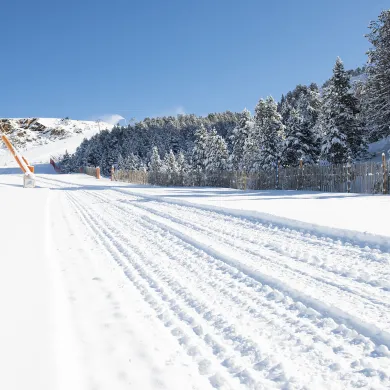 When planning a day of skiing or snowboarding, there are many factors to consider and, for the most experienced and knowledgeable, this includes the types of snow that will be found on the slopes. There are many different types of snow that exist on ski slopes and we’ll outline in this guide what the differences are and why these nuances can be important.
When planning a day of skiing or snowboarding, there are many factors to consider and, for the most experienced and knowledgeable, this includes the types of snow that will be found on the slopes. There are many different types of snow that exist on ski slopes and we’ll outline in this guide what the differences are and why these nuances can be important.
What are the different types of snow?
Yes, there are many different types of snow. Even the shapes of snow when looking under a microscope can be very different, as there are prisms, plates, dendrites, crystals, graupel, columns and needles.
Then, once the snow falls, factors such as the temperature, the density and the time of day can significantly change the texture of the snow on the ground. In general, there are five main types of snowfall on ski slopes, namely:
Powder Snow
Powder snow is the layer of fresh snow that has just fallen and that remains relatively untouched and fluffy, just waiting to be skied upon. It is by far one of the best types of snow for skiing on, especially for performing tricks and skills, and it is sometimes referred to as champagne powder, when it’s so powdery that it can feel like you’re skiing on bubbles. Although powder snow is thin, with very low moisture content, it sits above another relatively soft layer, so falling over on powder snow won’t hurt you too much.
Crud Snow
Crud snow is the by-product of the morning’s powder snow, with it becoming what we call crud once it has been tracked out a little. What is tracked out snow? Well, this happens when various skiers have passed through the powder snow and caused it to become packed in places. The main problem with this type of snow is that it causes unevenness on the slope, as there are patches which are more packed and others which remain quite powdery. If you’re skiing on crud, you’ll need to be careful and alert the whole way down because the feeling under your skis will keep changing from one soft sensation to a hard sensation. But, that’s perfectly normal and common, and many skiers actually love the challenge of crud snow.
Icy Pistes
When snow melts and freezes and melts and freezes, this forms some icy pistes of compacted frozen snow that have hard and slippery surfaces. When we’re talking about icy pistes, we’re dealing with a much thicker and harder top layer than a simple crust, so you’ll need to be aware that the entire slope could be slippery before you set off.
Crust
Depending on the temperatures of the ski slope in question, it may be possible to find a layer of crust on top of the snow. What this means is that there is a thin layer of frozen snow sitting on top of a layer of untouched powder. This occurs when there is a mix of sunny rays and wind, which melt the powder, but also cool air temperatures, which quickly refreeze the snow. Interestingly, there are different thicknesses of crust, as some are thick enough that you can ride on top of it, while others are thin enough that you will likely plough right through it.
Slush or Sticky Snow
When the snow starts to melt and becomes very wet, this is when you get slush on the ski slopes. Of all the different types of snow, this is the heaviest to ski or snowboard through.
Which different types of snow are best for skiing?
Some of the different types of snow are heaven for skiers and snowboarders, while others are hell. The favourite by far is powder snow as this gives a feeling of floating over the slopes. Because powder snow doesn’t last long, quickly becoming crud after being cut up, this is why many skiers and snowboarders will set off very early in the day, keen to ride the powder before it’s all gone.
Crust and crud are both quite common on ski slopes and aren’t necessarily bad types of snow. While not always ideal, any skiers or snowboarders with some experience should be fine on these kinds of slopes. With both crust and crud, the main issue is that the slopes are patchy and inconsistent, with some parts containing crust or packed snow, while others sections still have a lot of powder.
Then, icy pistes and slush or sticky snow are undesirable for opposite reasons. With icy slopes, it can be very slippy and difficult to ski on, while the hard surface and sharp edges can make for a painful fall if you hit the deck. With slush or sticky melting snow, there is the opposite problem of the snow being too soft. It can be very slow to ride such slopes and falls will get you very wet, even if there is much more cushioning than with a tumble on the ice.
So, are there different types of snow? Yes, there are. But, can you have fun skiing or snowboarding down all of them? Absolutely. While most prefer powder snow, there are some who relish the challenge of an icy piste or who enjoy the variety of crud. It’s simply a matter of trying out different kinds of slopes in a safe and supervised manner, working out for yourself which type of snow you enjoy the most.
